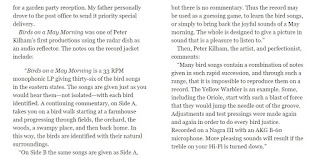The story is told on a cassette in the collection of the Conway Public Library's Henney History Room in the Dewey Decimal system 390s which focuses on customs, etiquette and folklore. This is the story and the story behind the story, as they say... but first a summary of the story.
Two Yankees were talking along side of the road and they saw something right in the middle of the road. They watched it for a time and it was working its way down the road "kinda slow through the mud."
One said to the other, what's that? The other says,
Well he says I don’t know (he) said I think it might be a cat
Well I says could be but there ain’t no tail on it that I could see
Well he says might be a bobtail cat mind ya
The other says,
Well I says might be but there ain’t no bobtail cat in this town I don’t know of one, d’you?
Well, he didn’t
So we watched that and it come on down
After a while he says to me
I think that’s a woodchuck
Now I says, you know darn well you never see a woodchuck hang in the middle of the road like that They’re always running from one stone wall t’the other
This goes on for a while, and ...
‘Bout then you could see it t’was a hat
That’s t’wat it t’was
It was a Grey felt hat
And I says to myself
I got looking at that
It was Kinda of a peaked model
Had sort of a brown smudge on the starboard side
And I says to Henry I’ve seen that hat before
Then they realize that there is a person under the hat deep in the mud. (Please realize that the magic of the story is in how it is told in a strong Yankee dialect).
The punch line comes at the end,
And I says ... leaned down some t’ speak close to him you know so he could hear
And I says Will I says
kinda muddy walking ain’t it
Well, he says
I ain’t a foot, i’m a horseback
Note these photos were taken on Pease Hill in Tamworth, New Hampshire not far from the Kilham family place (more on this later). The title of the recording is A Maine Pot-Hellion. The title refers to a type of stew.
The liner notes explain that Peter Kilham came up with the idea of linking the stories together with the device of a postman making his rounds (click on images to enlarge them).
Peter Kilham's son Larry recently published a biography of his father.
He writes about Peter's interest in recording nature sounds and an event with the Kennedys.
However, Peter is best known as the inventor of the Droll Yankee bird feeders.
He was also founded a company that created aluminum furniture.
He and Frank Hinder also created the Tamworth Nurse's Map in 1932.
Another story on the cassette has been turned into a book also in the Henney History Room collection.
These stories are only a small taste of the many tall tales that available for your reading and listening pleasure in the Conway Public Library's Henney History Room.























































